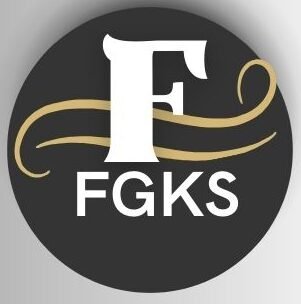Peonies are just small coins to most people, but to coin collectors, they can be symbols of history, art, and significant value. Some rare peonies, caused by minting mistakes, limited production, or historical significance, are worth far more than their face value. Ten unusual peonies exist within typical pockets and coin storage containers.
1943 Bronze Penny

People consider the 1943 bronze penny to be a well-known coin that entered circulation when America fought in World War II. During that year, the government produced steel peons instead of bronze ones to conserve copper materials for World War II, yet a few bronze blanks unintentionally got through the process.
The rare historical nature of this particular coin transforms it into one of the flagships among all U.S. currencies. Specially reserved examples of this coin have reached hundreds of thousands of dollars in value, so discovering one becomes a substantial opportunity for finding hidden value.
1955 Doubled Die Penny
This is a favorite coin among collectors because it has a major minting mistake. The effect of the doubling is clearly visible on the date and lettering and does not require a lens to identify it.
These coins can be worth hundreds to thousands of dollars, making this one of the most sought-after coins with a mistake.
1909-S VDB Penny
The 1909-S VDB Penny is the first Lincoln cent minted in San Francisco. The reverse side bears the designer’s initials “VDB,” which belong to Victor David Brenner.
Only a few of these coins ever appeared, leading to their high value among collectors. The market values Good-quality specimens at thousands of dollars, positioning them as top-ranked treasures within American numismatic history.
1943 Copper Penny
The 1943 Copper Penny stands as one of the multiple scarce coins. While most of the coins were made of steel that year, some copper blanks were mistakenly struck.
This coin is extremely valuable due to its rarity and can be worth hundreds of thousands of dollars. If you can find it, it will be an important part of minting history.
1992 Close AM Penny

The 1992 Close AM Penny is a modern mistake, with a rare variation in the distance between the “A” and “M” on the reverse of “AMERICA.”.
This mistake is considered very valuable among collectors and can be worth hundreds of dollars if found in good condition. Recognizing this slight difference can be like finding an unexpected treasure.
1972 Double Die Penny
The 1972 Double Die Penny is a minting mistake in which the design on the obverse appears double, especially in the date and lettering.
This penny is popular among collectors, and high-quality versions can sell for hundreds of dollars. This is a great addition to a collection based on mint mistakes.
2004-D Wisconsin Extra Leaf Penny
The 2004-D Wisconsin Extra Leaf Penny has a unique minting mistake, with an extra leaf appearing on the ear of “corn.”
This is a die mistake and is considered a gem among collectors. Depending on its condition, it can sell for hundreds of dollars.
1983 Double Die Penny

The 1983 Double Die Penny also has a rare mistake, with doubling appearing on the obverse.
This mistake is very rare and highly sought after. Good examples can sell for hundreds of dollars. This shows just how big a deal minting mistakes can become, and it is still a modern treasure today.
1958 Double Die Penny
The 1958 Double Die Penny is one of the rarest double die mistakes ever made. The coin stands as a rare gem in the numerical world because of its significant doubling on the wheat design as well as its scarcity.
The penny holds value up to thousands of dollars in the market, making it a standout piece in any intense coin collection.
1914-D Lincoln Penny
The scarce 1914-D Lincoln Penny ranks high among collector preferences due to insufficient manufacturing combined with its historic importance.
This coin can sell for hundreds or even thousands of dollars if it is in excellent condition. It is a great addition to a Lincoln Cent collection.
For collectors, the value of these coins lies in their rarity, historical significance, and other characteristics. Whether these coins are associated with minting mistakes, limited production runs, or historical events, they turn into treasures for the collector. Small differences sometimes mean a lot, and identifying them can lead to big rewards.
FAQS
What are the most valuable rare penny varieties?
Some of the most valuable rare penny varieties include the 1943 copper penny, 1955 doubled die penny, and 1909-S VDB penny. These coins are highly sought after by collectors due to their rarity and unique characteristics.
How can I identify a rare penny?
You can identify a rare penny by looking for specific characteristics such as minting errors (like double dies), unusual dates, or the presence of valuable mint marks. A magnifying tool can help you spot subtle details that indicate a rare coin.
What makes the 1943 copper penny so valuable?
The 1943 copper penny is rare because most pennies from that year were minted using steel, not copper. A small number of copper pennies were accidentally minted that year, making them highly valuable.
How much can a rare penny be worth?
The value of a rare penny can vary widely. Some pennies are worth hundreds or even thousands of dollars, especially if they have significant minting errors, are in excellent condition, or were made from valuable materials like copper or silver.
Should I clean my rare pennies before selling them?
No, it’s generally not recommended to clean rare pennies, as it can reduce their value. Cleaning can cause scratches or remove important details. It’s best to leave the coin in its natural state and have it appraised by a professional.








